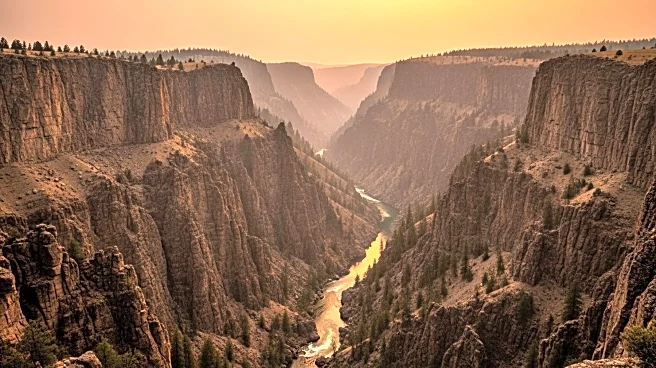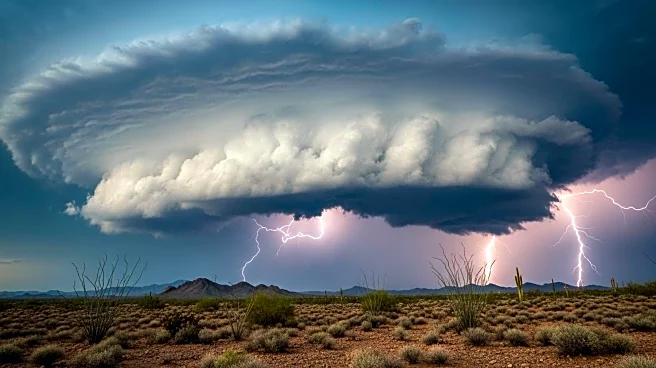What's Happening?
Wildfires near the Grand Canyon's North Rim have led to evacuations and the closure of the area. The White Sage Fire, ignited by lightning on July 9, has burned 10,973 acres and remains uncontained. Located 15 miles southeast of Fredonia, Arizona, the fire is advancing towards Jacob Lake. Approximately 500 visitors were evacuated from the North Rim on July 10, with further evacuations extending to a large area north of the Grand Canyon. The Dragon Bravo Fire, also sparked by lightning, has burned 1,500 acres and is similarly uncontained. The National Park Service has closed the North Rim to visitors to prioritize firefighting efforts and public safety.
Why It's Important?
The closure of the Grand Canyon's North Rim impacts tourism and local businesses reliant on park visitors. The fires pose significant risks to air quality and safety, necessitating urgent evacuations. The situation underscores the challenges posed by extreme weather conditions, which exacerbate wildfire risks. The ongoing fires highlight the need for effective disaster management and preparedness in national parks, which are vital for conservation and recreation. The economic implications extend to local communities and businesses that depend on tourism revenue.
What's Next?
Firefighting operations will continue as authorities work to contain the fires. The National Park Service will monitor air quality and safety conditions, potentially extending closures if necessary. Local communities and park employees remain on alert, with evacuation orders in place. The situation may prompt discussions on improving fire management strategies and infrastructure to better handle such emergencies in the future.
Beyond the Headlines
The wildfires raise concerns about climate change and its role in increasing the frequency and intensity of such events. The situation may lead to policy discussions on environmental protection and sustainable tourism practices. Long-term impacts could include changes in park management and visitor guidelines to enhance safety and resilience against natural disasters.












